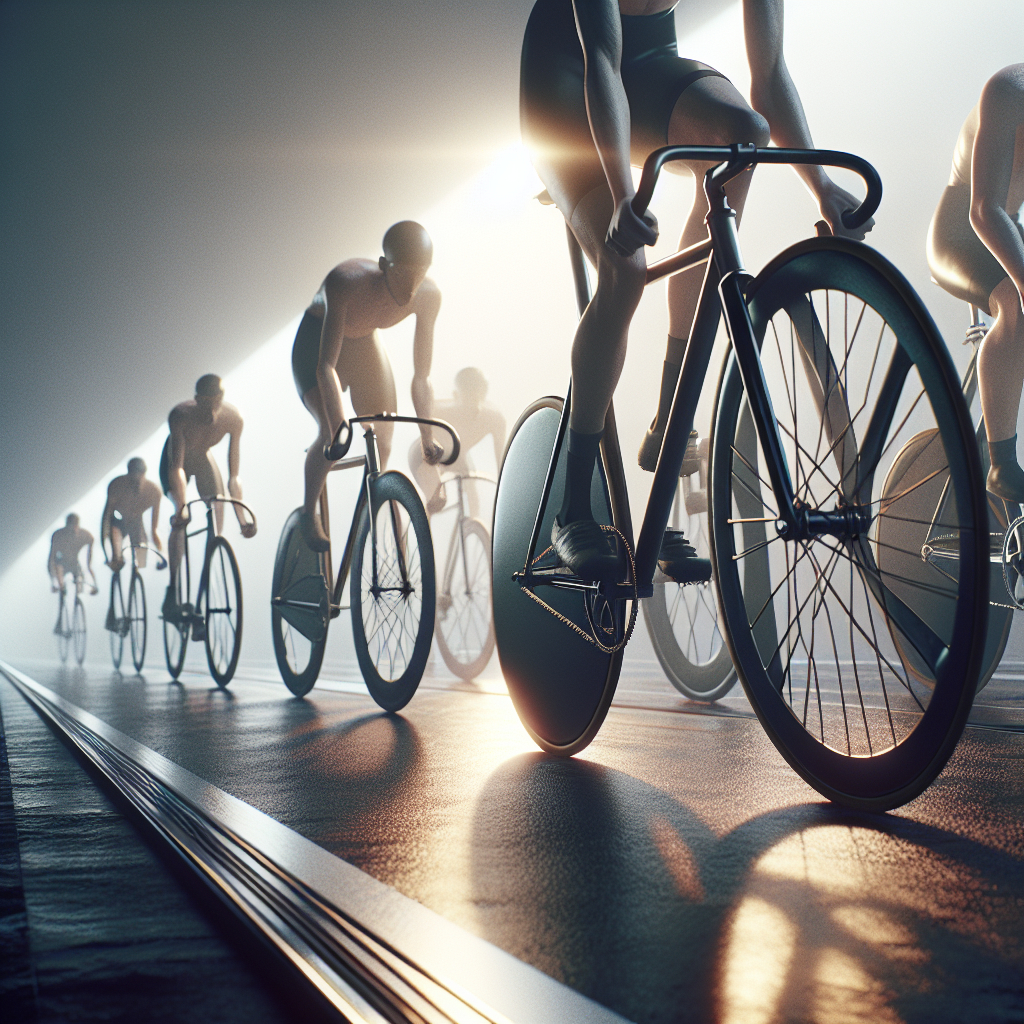
Track and fixed gear bikes, often referred to as “fixies,” have gained a significant following among cycling enthusiasts. These minimalist bicycles, known for their simplicity and direct connection between rider and machine, offer a unique and exhilarating riding experience. In this article, we will delve into the world of track and fixed gear bikes, exploring their history, design, and the culture that surrounds them.
History of Track and Fixed Gear Bikes
The origins of track and fixed gear bikes can be traced back to the early days of cycling. Track cycling, which involves racing on a velodrome, has been a part of the Olympic Games since 1896. The bikes used in these races are designed for speed and efficiency, featuring a fixed gear mechanism that allows for direct power transfer from the rider to the wheels.
Fixed gear bikes, on the other hand, have a more diverse history. They were initially used by bike messengers in urban environments due to their low maintenance and reliability. Over time, these bikes gained popularity among cycling enthusiasts who appreciated their simplicity and the unique riding experience they offer.
The Evolution of Track Bikes
Track bikes have evolved significantly since their inception. Early track bikes were made of steel and featured simple, yet robust designs. As technology advanced, materials such as aluminum and carbon fiber were introduced, making the bikes lighter and more aerodynamic. Modern track bikes are highly specialized machines, designed to maximize speed and performance on the velodrome.
One of the key features of track bikes is their fixed gear mechanism. Unlike traditional bicycles, track bikes do not have a freewheel, meaning the pedals are always in motion when the bike is moving. This direct connection between the rider and the bike allows for precise control and efficient power transfer, making track bikes ideal for racing.
The Rise of Fixed Gear Bikes
Fixed gear bikes, or “fixies,” have a more grassroots origin. They gained popularity among bike messengers in cities like New York and San Francisco in the 1980s and 1990s. Messengers favored these bikes for their simplicity, durability, and low maintenance requirements. The fixed gear mechanism also allowed for better control in urban environments, where quick stops and starts are common.
As the fixed gear culture grew, so did the community of riders who embraced the minimalist approach to cycling. Fixed gear bikes became a symbol of counterculture and individuality, with riders often customizing their bikes to reflect their personal style. This movement gave rise to events such as alleycat races, where riders navigate through city streets in unsanctioned, high-speed races.
Design and Mechanics of Track and Fixed Gear Bikes
The design of track and fixed gear bikes is characterized by simplicity and functionality. These bikes typically feature a lightweight frame, a single gear, and minimal components. This minimalist approach not only reduces weight but also minimizes the chances of mechanical failure, making these bikes highly reliable.
Frame and Geometry
The frame of a track or fixed gear bike is designed for speed and agility. Track bike frames are often made from lightweight materials such as aluminum or carbon fiber, while fixed gear bikes may also use steel for its durability and classic aesthetic. The geometry of the frame is optimized for aerodynamics and power transfer, with a steep head tube angle and a short wheelbase.
One of the defining features of these bikes is the horizontal dropouts, which allow for easy chain tension adjustment. This is crucial for maintaining the proper tension on the chain, as fixed gear bikes do not have a derailleur to take up slack.
Drivetrain
The drivetrain of a track or fixed gear bike is simple and efficient. It consists of a single chainring at the front and a single cog at the rear, connected by a chain. The absence of multiple gears and derailleurs reduces weight and mechanical complexity, making these bikes easier to maintain.
The fixed gear mechanism means that the pedals are always in motion when the bike is moving. This direct connection between the rider and the bike allows for precise control and efficient power transfer. However, it also means that riders must be constantly aware of their pedaling, as they cannot coast or freewheel.
Brakes
Track bikes used in velodrome racing typically do not have brakes, as riders rely on their ability to slow down by resisting the motion of the pedals. This technique, known as “skidding,” allows for quick deceleration and precise control. However, fixed gear bikes used on the road often have at least one brake for safety reasons.
Many fixed gear riders choose to ride with a front brake, as it provides the most stopping power. Some purists, however, prefer to ride brakeless, relying solely on their ability to skid to a stop. This requires a high level of skill and control, and is not recommended for beginners.
The Culture of Fixed Gear Cycling
The fixed gear cycling community is known for its strong sense of camaraderie and individuality. Riders often customize their bikes with unique paint jobs, components, and accessories, making each bike a reflection of its owner’s personality. This culture of customization has given rise to a thriving market for fixed gear parts and accessories.
Events and Competitions
Fixed gear cycling has a vibrant event scene, with races and competitions held around the world. One of the most popular types of events is the alleycat race, which originated in the bike messenger community. These unsanctioned races take place on city streets, with riders navigating through traffic and checkpoints to reach the finish line.
Other popular events include tracklocross, a hybrid of track cycling and cyclocross, and fixed gear criteriums, which are high-speed races held on closed courses. These events showcase the skill and agility of fixed gear riders, and often attract large crowds of spectators.
Community and Social Aspects
The fixed gear community is known for its inclusivity and supportiveness. Riders often gather for group rides, social events, and bike maintenance workshops. These gatherings provide an opportunity for riders to share their knowledge, skills, and passion for fixed gear cycling.
Social media has also played a significant role in the growth of the fixed gear community. Platforms like Instagram and Facebook allow riders to connect with others around the world, share their experiences, and showcase their bikes. This global network of fixed gear enthusiasts has helped to spread the culture and foster a sense of belonging among riders.
Conclusion
Track and fixed gear bikes offer a unique and minimalist approach to cycling. Their simple design, direct power transfer, and strong sense of community make them a popular choice among cycling enthusiasts. Whether you’re racing on the velodrome, navigating city streets, or simply enjoying a leisurely ride, track and fixed gear bikes provide an exhilarating and rewarding experience.
As the fixed gear culture continues to grow, it is clear that these bikes are more than just a mode of transportation. They represent a lifestyle, a community, and a passion for the art of cycling. So, if you’re looking for a new way to experience the joy of riding, consider giving a track or fixed gear bike a try. You might just find yourself hooked on the simplicity and thrill of minimalist cycling.

